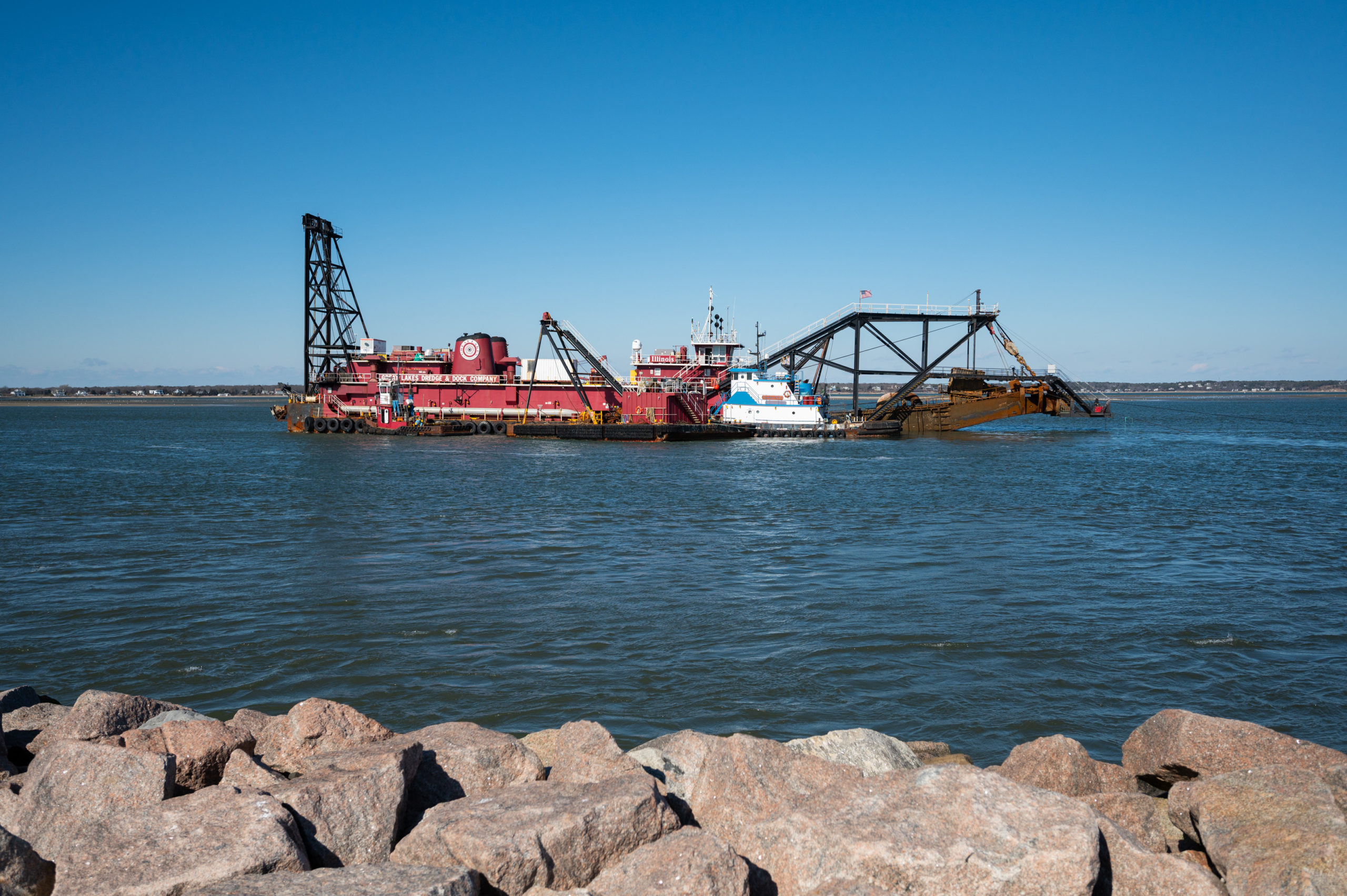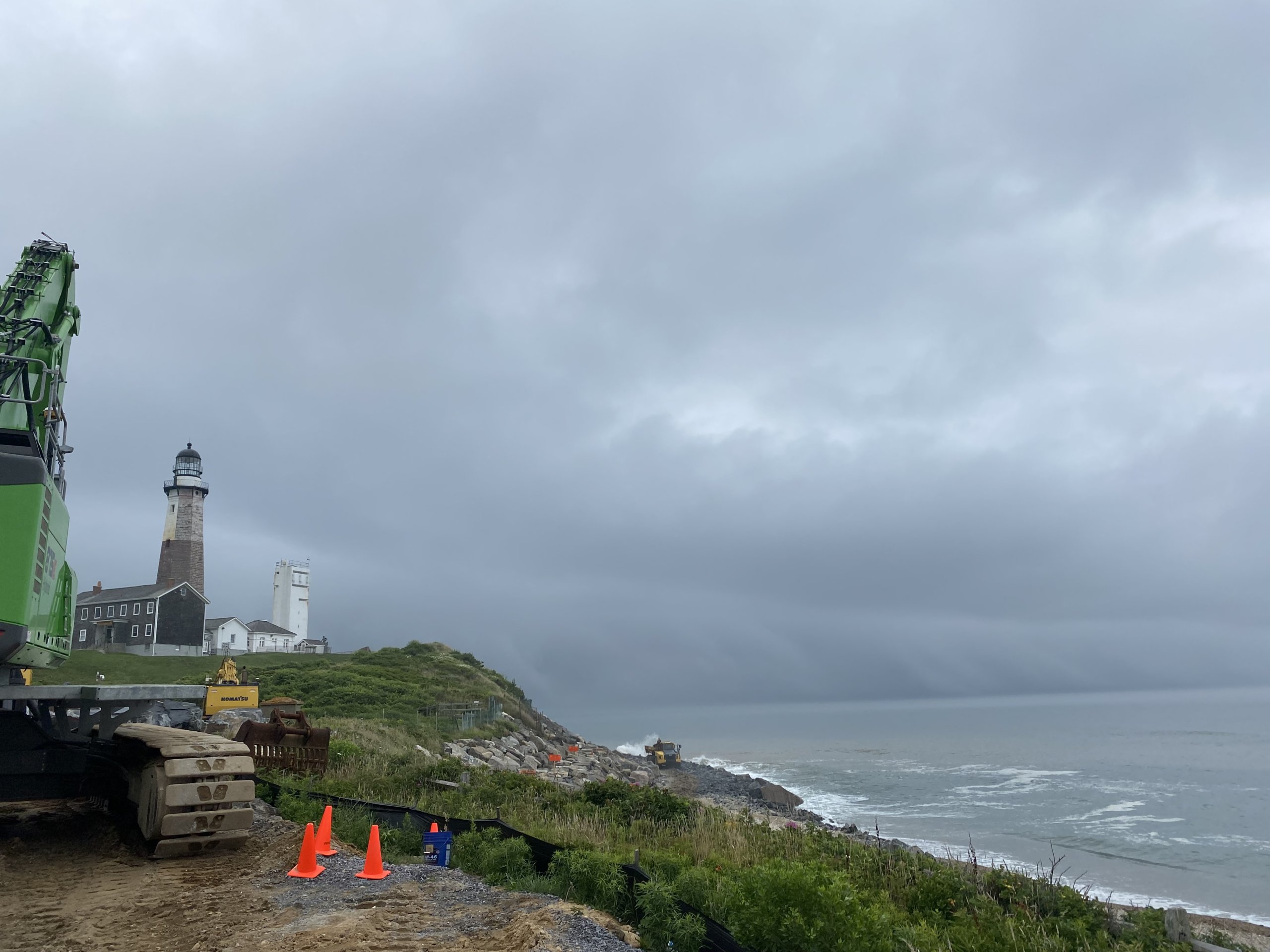FIMP Gears Up: $1.5B Storm Safeguard Plan Advances, Despite Concerns

Elsa, the first hurricane of the season, blew over the South Fork as a nor’easter July 9, bringing gusts, downpours and reminders of the region’s vulnerability just as local officials have been preparing for a long-sought sprawling federal project they hope will protect against future storm damage.
More than a half century after first being proposed, the $1.5 billion Fire Island to Montauk Point (FIMP) project is entering the final stages of preparation before work is expected to begin, possibly as early as this summer. The plan involves pumping sand dredged from the seafloor onto oceanfront beaches and raising up bayfront structures across an 83-mile stretch of the South Shore from Montauk Point to the Fire Island Inlet. But some say the money would be better spent relocating waterfront properties away from the impending threat of sea-level rise.
“We cannot afford to keep dumping sand to maintain a beach that isn’t going to stay,” said Steven Resler, a retired state Department of State coastal manager who advocates a strategic retreat and selective fortification policy—not rebuilding beach homes lost to storms, but constructing a sea wall for lower Manhattan.
But despite FIMP’s slow progress—the fully federally funded project only received financing about a decade ago as part of the relief package passed following Sandy in 2012—it is unlikely that officials will hit the brakes on the plan.
And so the U.S. Army Corps of Engineers is preparing to issue a request for proposals for the first contracts on August 3. The five South Shore towns involved—Babylon, Islip, Brookhaven, Southampton and East Hampton—have all signed agreements, but the feds are still waiting on a project participation agreement (PPA) with the state Department of Conservation. The first leg of the project is expected to start at Robert Moses State Park.

“When construction begins, Army Corps contracts specify certain aspects of work to include,” said James D’Ambrosio, a spokesman for the Army Corps. “It’s too early to tell how many contracts will be needed for the entire project … Should we receive acceptable bids, we expect to award a contract late this summer and begin construction in the fall.”
Ironically, despite FIMP’s inclusion of Montauk Point in its name, the recently started project to buttress the revetment at the base of the Montauk Point Lighthouse is considered a separate job for the Army Corps.
Among the thornier issues yet to be ironed out with FIMP is the matter of acquiring hundreds of easements—a legal right of way allowing crews to perform work on private property—will be needed from oceanfront property owners. The Town of Southampton has about 500 and has yet to begin the process of hiring outside counsel to negotiate the easements. Eminent domain—the legal process in which the government acquires private property for public use—is a possibility if negotiations break down.
“It actually helps the property,” said Southampton Town Supervisor Jay Schneiderman, who hoped that condemning land isn’t necessary. “It’s in their interest.”
The villages that fall within the project area will also be involved in acquiring easements. A side effect of FIMP is that beaches that federal contractors pump sand onto must be open to the public.
“General public access will have to be provided at the Quogue Village Beach,” Quogue Mayor Peter Sartorius said in a letter to residents. “Specifics remain to be finalized, but it appears that there will be some general access, daily rate parking at the parcel adjacent to the Village Beach parking lot that is jointly owned by the Town of Southampton and the Village of Quogue.”
Proponents continue to look on the bright side.
“The signing of the PPA and the beginning of bid solicitation are both encouraging signs that this decades-in-the-making effort to preserve, restore and protect the Long Island coastline is finally becoming a reality,” said U.S. Rep. Lee Zeldin (R-Shirley).
The project isn’t without its detractors.
“I’ve identified a number of concerns with the various components of the plan,” said Kevin McAllister, founding president of Sag Harbor-based environmental advocacy group Defend H20. “I’m finding that my efforts to bring these issues to the fore are being met by elected officials with self-imposed ignorance rather than a critical examination of the outstanding issues.”
Both McAllister and Resler took issue with the biological impacts of dredging 50-to-100-acre holes in the sea floor to pump the sand on the beaches and build dunes, which may set marine habitats back decades, if not longer.
Curiously, the debate over how effective rock jetties known as groins are appears to depend upon location. The argument against groins is that they starve beaches to the west of sand from what’s known as the littoral drift, or the natural flow of sand from east to west. In the Village of Ocean Beach on Fire Island, FIMP calls for removing two groins, but more than a dozen groins in the Hamptons leg of the project will remain in place.
Resler argues that nature should run its course.
“Leave the barrier islands alone,” he said. “Erosion is not a bad thing there. It’s necessary. Without it we wouldn’t have what we love most about Long Island.”



